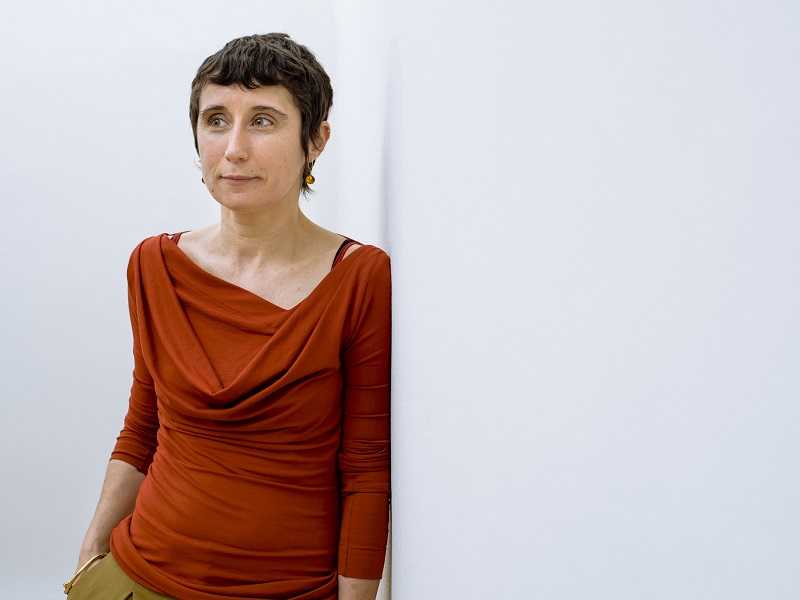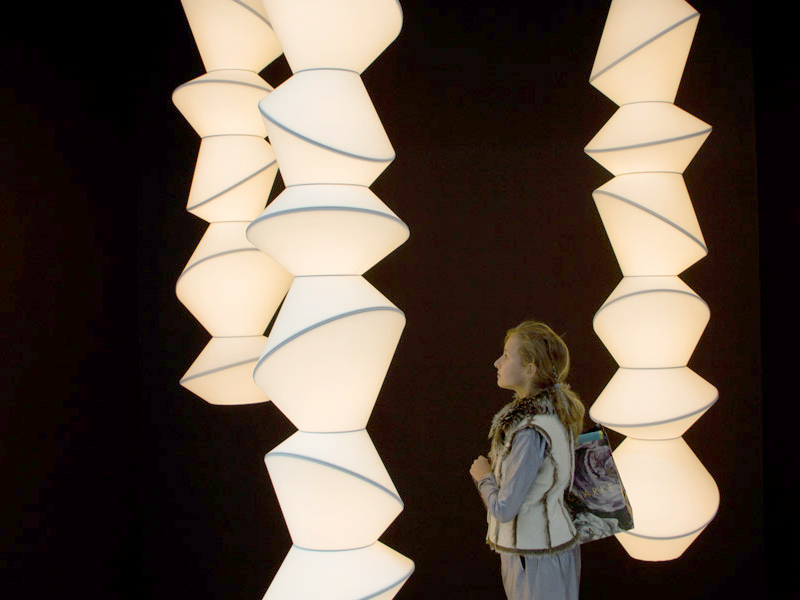
The Resource Dilemma: How to Find Money to Fund Culture without Offending Anyone
MONEY, MAP, TWO EUROPES
If using the metaphor of culture as a garden, or at least the frontyard of a house, it is worth being cautious with money, just like with water and fertiliser.
Much depends on what exactly a certain community wants to grow, how its key players explain culture, how they see its development model and the objectives of the cultural policy. There is no single correct model in Europe, and this is also true of the world.
Despite its “incorruptibility”, culture does not grow in a vacuum – its phenomena contain the crystals of accumulated experience and bacilli of all its unresolved problems.
The just mentioned disparities in resources available for development in the “old” and “new” Europes, are reduced with mechanisms created for this purpose, such as the Structural Funds of the EU, without whose money the museum revolution in Poland, the development of art incubators in Estonia, or the emergence of affordable credit for startups in creative industries would have hardly been possible.
For Ukraine and other neighbouring EU countries, this tool is not yet available. But even if our municipalities, libraries or museums were legally offered access to billions of euros, there is no guarantee that they would have been able to put forward high-quality project proposals. Professionals capable of such work are too few to count.
So, first and foremost, it is worth thinking about how to teach Ukrainian cultural institutions project management and proactivity.
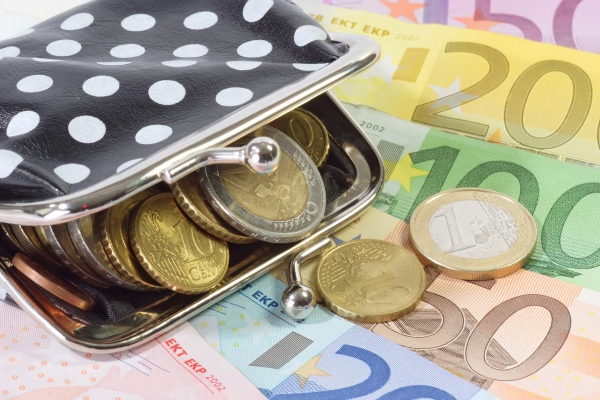 |
|
There are several state culture support models in Europe. Moreover, management skills of local art activists as well as stable financing impact the development of culture in European countries. Photo: Colour/Depositphotos |
Starting from 2015, the Creative Europe and Horizon 2020 programmes have been open for application to Ukrainian organisations, though this can only be done in partnership with organisations from other European countries. Although still not centre-stage, it is a chance to acquire the necessary skills.
Money, in spite its inherent cynicism, is only an equivalent of cost, and so, one way or another, it is related to meanings. Besides, it is far from the only resource. In order to understand how much of these resources are required and from what sources they can be obtained, it is important to consider what objectives or needs they are required for.
The study by the Budapest Observatory also shows the variance in perceptions of the key problems in the cultural field in different parts of Europe.
In the West, people are more concerned about such factors as cuts in resources available to culture at municipal level, the excessive instrumentalization of culture as a component of the economy and the marginalised role of humanities in school curricula.
Whereas in the East, people are more concerned about the excessive interference of politicians in cultural affairs, the inaptitude of education to prepare young people for the perception of culture, the lack of clear objectives and transparent planning at all levels.
LATVIA: PRINCESS OF THE GLASS MOUNTAIN
Nevertheless, there are countries in the Eastern bloc that not only found themselves in the same current as old Europe, but also undertook to resolve its inherent problems. One such country is Latvia, which recently held the EU presidency.
According to the Budapest Observatory, the percentage of spending on culture in Latvian local budgets is one of the highest among European countries. Information about the cultural life of Latvia is available on Compendium, the European Council’s cultural portal, and indicates that roughly 56% of public expenditure on culture is provided by Latvian municipalities.
The economic crisis has markedly impacted the local economy and, consequently, the funding of culture. Overcoming the recession was the impetus for fundamentally reconsidering the principles of cultural institutions management in Latvia.
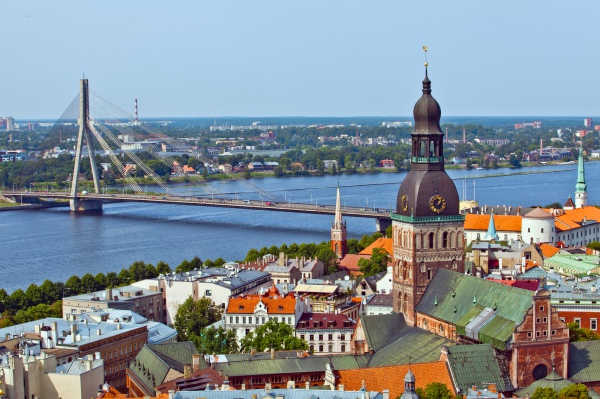 |
|
Some 56% of public spending on culture in Latvia is provided by local budgets. Photo: prescott10/Depositphotos |
On the one hand, this accelerated the decentralisation process at regional level and, on the other, marked a centralisation trend at national level. As a result, a number of state bodies such as the National Film Centre and the Latvian State Museums Administration were integrated into the hierarchy of Latvian Ministry of Culture and their autonomy was lost.
The principle of replenishing the State Cultural Capital Foundation (SCCF) changed too. Whereas starting in 2003 the foundation was financed with excise tax on alcohol and tobacco, and taxes on gambling and lottery, since 2014 it has been directly financed through the Ministry of Culture.
On the whole, the Latvian model can be described like this: cultural policy is part of the national strategy aimed at the development of personal growth of individuals and economic growth, including the regions. Business replenishes the budget, which enables the funding of cultural projects, both through the SCCF and municipal budgets.
The relationship between culture and regional growth is reflected in The National Development Plan for Latvia 2014-2020 (NAP 2020).
“Unique resources of culture and human capital potential provide an opportunity for local self-government to develop competitive business activity, while shaping a friendly and inclusive living environment. In a creative society, cultural capital plays a major role in the personal growth of individuals,” was how one of the priorities of the strategy adopted in 2014 was worded.
A pilot version for the introduction of this approach was the National Library of Latvia. In that same year, the construction of a new building was completed and the library became the centre of social activity.
The library’s main priority is working with children, for whom special spaces were created where the little visitors can play in, immerse themselves in the world of books, while older youth can do their homework and obtain the information they need.
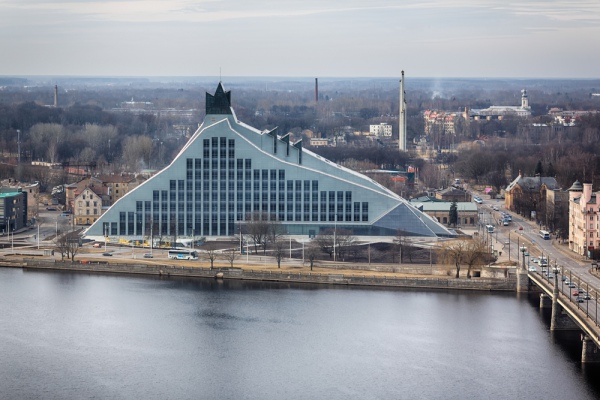 |
|
The new building housing the National Library of Latvia is reminiscent of a fairy-tale glass mountain with its contours, located on the left bank of the River Daugava in a once humble neighbourhood of Riga. Today, the library is the “centre of attraction” for tourists and developers. Photo: castenoid/Depositphotos |
The institution also offers a wide range of services for the elderly, in particular teaching them how to use the Internet and pay their utility bills online.
Successful Latvian business companies, realising the significance of the cultural environment in building brand confidence, support art projects through patronage and sponsorship formats, as, for example, the Rietumu Bank, which has created a eponymous charitable trust to support music and theatre projects.
Legislation too contributes to such forms of participation of private capital in culture. Thus, the 1995 law on corporate tax for donors supporting cultural institutions stipulates the payback of up to 85 % of tax payments on sums donated to public institutions, companies that by decree of the Ministry of Culture perform cultural functions, and charitable foundations registered in the Republic of Latvia.
Thus, tax relief for these institutions “works for the public good”. Nevertheless, the tax relief pursuant to the provisions of the above-mentioned law does not exceed 20% of the total tax payment.
Incidentally, according to the Budapest Observatory, the topic of special incentives for philanthropy and private sponsors is characteristic of post-Soviet states, while in most European countries (e.g., UK) it is significantly less relevant.
DENMARK: CREATORS OF HAPPINESS
In 2016, Denmark was named by the World Happiness Report as the happiest country in the world. Although the study did not establish a direct link between culture and the happiness index, it is relevant by implication because it has to do with values, social cohesion, public space, lifelong learning and promotion of interest and creativity, which in the end provide more chances for self-realisation.
The Danish model is about decentralisation of the government management system and liberalisation of tax legislation.
According to information available in the country’s profile on Compendium, today Denmark has one of the highest percentages of people aged 15 years and older who visit theatres, museums, exhibitions, libraries, cinemas, historic sites, etc. Some 70% of Danes have regular access to the Internet.
One of the priorities of cultural policy in Denmark is establishing cooperation between “traditional” commercial organizations and companies that work in the cultural sphere. The expected result is the strengthening of business skills of art professionals and abilities of commercial companies to use creative approaches and cultural competencies in the development of products and services for the mass market.
The executives of the cultural policy of Denmark set an ambitious goal about 10 years ago: funding most cultural activities with private funds, and in so doing incentivising with tax cuts businesses involved in cultural projects.
In fact, the experiment is not over yet, but according to the Ministry of Culture of Denmark, total spending on culture has increased by approximately 300,000 Danish kroner.
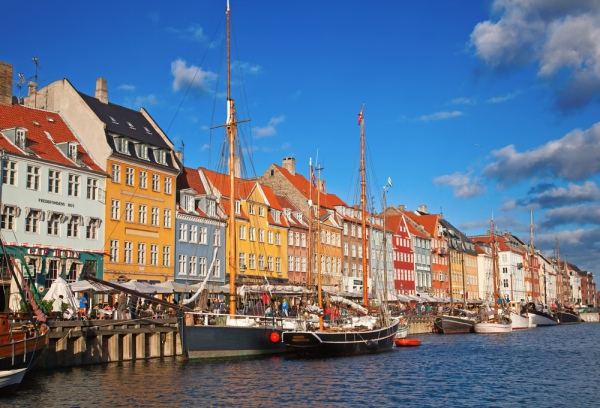 |
|
Denmark has one of the highest figures for visits to theatres, museums, libraries, cinemas, and historical sites. Photo: swisshippo/Depositphotos |
With the aim of developing the said initiative, in 2008 the Danish government established the Centre for Culture and Experience Economy. The activities of this institution, which are co-managed by the Ministry of Culture and the Ministry of Economic and Business Affairs, are aimed at improving cooperation among culture, business, universities and scientific research institutes.
The centre has been holding the Creative Business Cup competition since 2015 for the financial support of innovation in creative industries and social entrepreneurship.
After coming out of recession, the state budget in the cultural sphere has averaged about 1% of the state budget. In 2011, 399,600,000 Danish kroner were allocated to culture (roughly 54 million euros).
However, the average Danish household spends on cultural activities and products (including tickets to films, theatres, concerts, museums and zoos, and books, newspapers and magazines) 4,885 Danish kroner on average annually (550 euros) per household, which is 2% of the total household budget.
Cultural industries are developing actively in Denmark. For instance, there are more design studios in Copenhagen than in any other European city. It is also worth noting that the famous Lego line of toys were born here.
Denmark’s cultural policy can be aptly compared to a Lego set: mastering the operation of many small details is at the forefront here.
FINLAND: CULTURAL WELFARE
The Finnish model of cultural policy is a reflection of this country’s inherent socially-oriented state model.
A large part of allocations by the Ministry of Culture of Finland are earmarked to support national cultural institutions and the arts, in addition, to discretionary state subsidies to municipal cultural centres.
A significant part of financial support provided by the Ministry of Culture comes from the proceeds from Veikkaus, the Finnish national betting agency. The distribution of funds is carried out on the principle “at arm’s length”, a component of decentralisation policy.
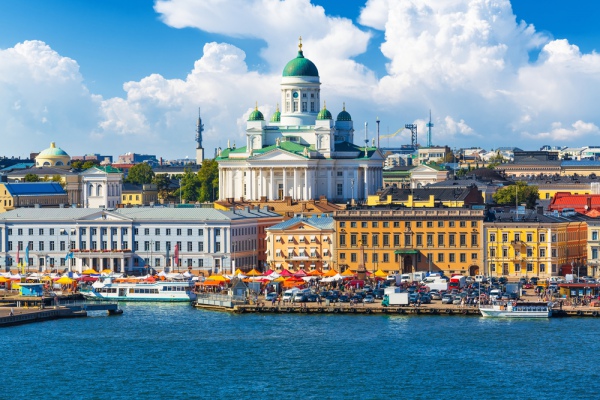 |
|
Part of the financial support that Finnish art institutions receive from the Ministry of Culture is provided by proceeds from the national lottery. Photo: scanrail/Depositphotos |
Besides, the latter has a vertical and a horizontal dimension. The former includes a number of expert structures and institutions, which advise the Ministry of Education and Culture and carry out coordination of policies. Some of these bodies have the right to make their own decisions.
Horizontal decentralisation is based on professional artist and associations of culture professionals, which play an important role in the development and implementation of policies on support of cultural activists and in the distribution of grants for project activities.
Priority areas here include art education and support of individual creativity, institutional support for culture and the arts (especially libraries, theatres, orchestras and museums) and technical content of cultural heritage sites.
In recent years, the total volume of cultural funding in Finland has been 450 million euros on average. There are several private foundations operating in parallel, the most active being the Finnish Cultural Foundation.
Funding entering through the Ministry can directly cover the expenditure part of the budget of cultural institutions, or be carried out indirectly. The former corresponds to the Finnish system for state funding. According to Finnish laws, the state share of funding may either go directly to the theatre, museum or orchestra, or it may be given to municipalities, which in turn make the decision regarding which needs to support and by how much.
At the same time, institutions or projects often receive support from both the Ministry of Culture and the relevant municipality. For example, this applies to HIAP, the Helsinki International Artist-in-residence Programme, which focuses on contemporary art and is open to professionals from other disciplines.
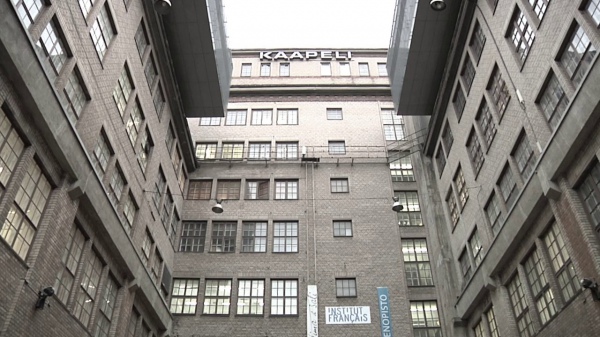 |
|
The studios of HIAP, an artist-in residence programme, located on the territory of the Cable Factory in Helsinki. Photo: archeologiaindustriale.net |
HIAP receives between 70 and 90 residents from around the world annually, who are offered 1-3 months to live and work in studios located in the Cable Factory creative cluster in Helsinki.
POLAND: A CULTURE OF DIALOGUE AND FINANCIAL BALANCE
Quite a lot is known in Ukraine about the Polish model of cultural policy as well as Polish culture itself. Therefore, I will turn my attention to specific details.
It is a country with a rich historical heritage and a powerful contemporary culture environment, which affect funding priorities.
The cultural community in Poland is quite clearly structured along ideological lines. For example, the theatrical environment is predominantly leftist, the museum one steers manifestly right, while visual arts professionals are evenly distributed between leftist and liberal camps, with professionals of the creative sector possessing neo-liberal views.
Tensions sometimes arise between the “inhabitants” of these spheres; however, they were able to create a dialogue, which enables them to collaborate constructively.
In addition, Poland has also found a quite productive balance between central government, local self-government, and the public and commercial sectors.
Since 2001, the Ministry of Culture and National Heritage of Poland, within the framework of so-called state goals, annually distributes around 36 million zlotys to non-governmental organisations (3.9% of total budget spending on culture) through corresponding mechanisms.
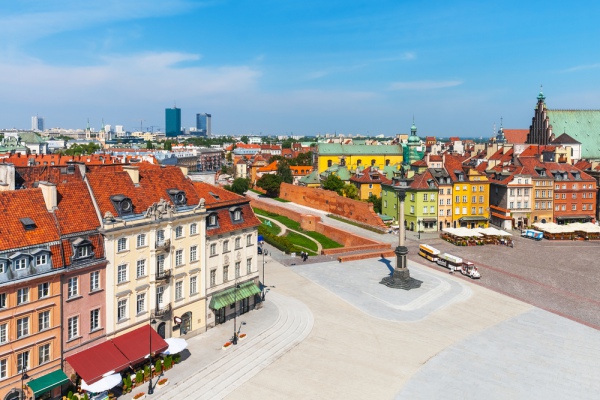 |
|
The Poles were able to build a productive balance between central government, local self-government, and the public and commercial sectors. Photo: scanrail/Depositphotos |
In 2002 the Ministry obtained the right to part of the proceeds from state lotteries. This new measure by the government provoked strong opposition on the part of the sports lobby. As a result, lottery ticket prices were increased by 5% and the ratio of lottery proceeds between the sports and culture sectors was set at 80:20.
In any case, this turned out to be enough to fund the activities of the Polish Film Institute and the Fund for the Promotion of Creative Activity, which also survives on payments from literary and music publishers.
In 2003, Poland – like Lithuania, Slovakia and Hungary before it – introduced the financial instrument of the right to 1%. In accordance with national legislation, taxpayers in Poland are entitled to transfer 1% of their income tax directly to organisations that work for the public good.
Cultural organisations in Poland are today a minority among the recipients of these funds, but the presence of this option allows for a balance between the different sources of funding.
SHALL WE GO FOR THE BRIGHT OR THE BEAUTIFUL?
Talking about the place of culture in the system of social relations or debating the sources of its support, we can find ourselves in a resource dilemma, similar to the one in which countries with significant reserves of oil, gas or other natural resources found themselves.
Thus, countries or rather cities, regions and other clusters with a rich heritage, great art collections and cultural traditions convert these assets into tourism and place emphasis on the patronage format of support for creative activity.
And yet other regions, which have not been as lucky with history, interpret culture as part of the educational space (e.g., Finland) and as a sphere of experiment, creativity and innovation. Such a model is undoubtedly more democratic and open.
 |
|
Ukraine still does not have a clear state system for cultural support. Photo: fikmik/Depositphotos |
So what model is most suitable for Ukraine? The answer depends on whether we choose a society of open access and strive to overcome corruption, or whether we are guided by the phantom pains of our baroque mind-set and seek to support culture as a quasi-aristocratic lifestyle only available to “the chosen.”
We have prototypes of collaborative approaches (e.g. the crowdfunding initiative Spilnokosht or the Teple Misto platform). They are developing actively and laying the foundations of stability. However, the patronage model, despite its effectiveness, depends on changes in general attitudes and conditions too often.
Mykola Skyba, specially for Ukrayinska Pravda, Culture section
The text was prepared by Ukrainska Pravda with the assistance of the EU-EaP Culture and Creativity Programme.


